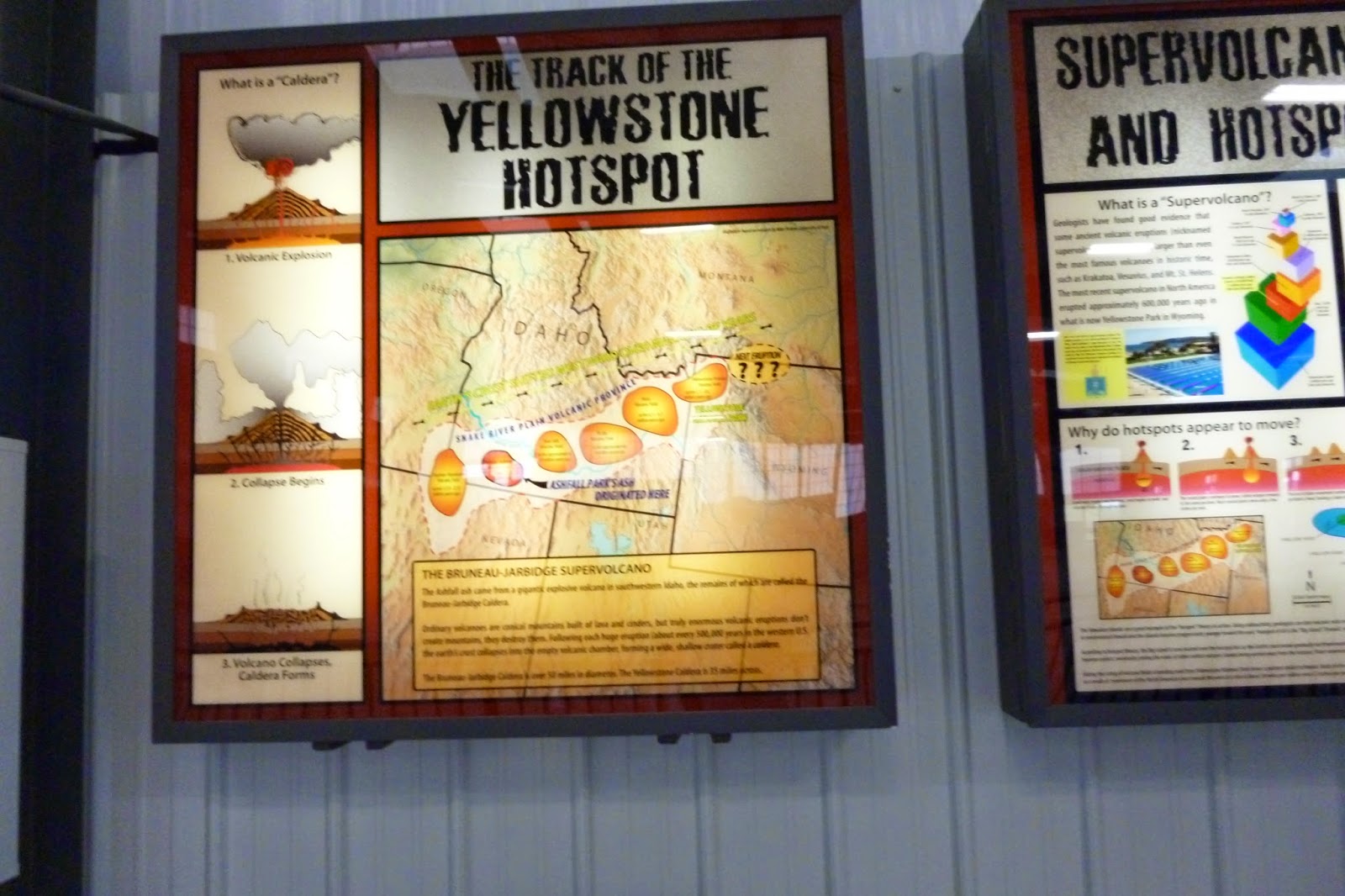No, I'm serious. You see, the continents and the crust below the ocean are floating on molten rock below them. And when these plates run into each other and start fighting over which one should be forced under the other, they have the potential to form earthquakes and VOLCANOES! This is how you get Mt. St. Helens.
But believe it or not, that one was little. Larger volcanoes are caused by something very different. In the molten rock below the crust, there are a few spots that are hotter than others, aptly named hot spots. They build up pressure below the crust that they are below, and finally when the crust can't hold on anymore, they hiccup.
 When they are below the ocean, it isn't a big deal. Oceanic crust is made of a material that just kind of melts, gives way a little bit, and flows up to form an island. And then as the plate moves over the hot spot, a chain of islands form. This is how Hawaii formed, and why only one of the islands is still an active volcano. And why people can inhabit that island without really worrying about getting blown away.
When they are below the ocean, it isn't a big deal. Oceanic crust is made of a material that just kind of melts, gives way a little bit, and flows up to form an island. And then as the plate moves over the hot spot, a chain of islands form. This is how Hawaii formed, and why only one of the islands is still an active volcano. And why people can inhabit that island without really worrying about getting blown away.But then once in a rare while, they end up below the continent. And when that happens, they form super volcanoes, and the crust is a type that likes to hold on to gases as long as it can before it finally explodes. Everyone's favorite example is Yellowstone. It turns out that when Idaho was over that same hot spot, it went off and formed the little shards of glass (also known as ash) that would bury everything and become Ashfall.
But why glass, people ask? Glass is man-made, isn't it?
Well, yes. You're windows that are made very nicely in a controlled environment are, anyway. But man has a habit of making use of natural processes. You see, if you have ever had the chance to see how glass is made (at least how it was made in the early days of glass making), it basically consists of blowing a bubble of super-heated sand or rocks with a lot of silica in them. And in an environment that isn't controlled, its like watching a little kid blow a bubble out of gum. It gets bigger, and bigger, and then POP! It explodes. Especially in volcanoes that are underneath continents, because they are basically MADE of silica.
 And what about Yellowstone? Could it happen again? Well, yes. But one the size of Ashfall wouldn't happen in our lifetimes. In fact, the last one that went off from the hotspot was smaller than that. And the eruptions aren't actually as much like clockwork as the media would have us believe. Geologists are monitoring the spot, and while it is active, it is a long way off from having enough pressure to blow. If it were to, it wouldn't even classify as a hiccup.
And what about Yellowstone? Could it happen again? Well, yes. But one the size of Ashfall wouldn't happen in our lifetimes. In fact, the last one that went off from the hotspot was smaller than that. And the eruptions aren't actually as much like clockwork as the media would have us believe. Geologists are monitoring the spot, and while it is active, it is a long way off from having enough pressure to blow. If it were to, it wouldn't even classify as a hiccup.
No comments:
Post a Comment